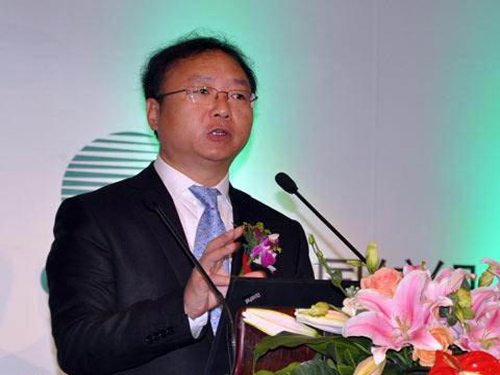The real economy is the main form of textile industry development

Due to the impact of costs, policies, and the global economic environment, the development of China's current textile industry is facing no small challenge. However, under the new economic situation, the status of the textile industry has not been shaken, and the prospects for development have generally been positive. China's textile products exported still maintain a high share in the major international markets, and the textile industry will maintain its good momentum of development in recent years.
As one of the important contents of the 18th Cross-Strait Textile and Garment Expo, the 6th Maritime Silk Road and cross-strait textile entrepreneurs activities were held in Shishi a few days ago. The theme of the event is “New Economy and New Business Opportunities in Textile and Apparel Industryâ€. The event is sponsored by the China Textile Industry Enterprise Management Association (CFLAC), the Taiwan Spinners Association, and the organizing committee of the Haibo Conference. China Textile The Federation of Industry and the People’s Government of Shishi City serve as an activity support unit. The textile entrepreneurs on both sides of the strait discuss the textile industry under the new situation and explore new business opportunities and promote industrial upgrading in the “One Belt and One Road†context.
Sun Ruizhe, vice president of the China Textile Industry Federation and president of the China Textile Industry Enterprise Management Association (China Textile Entrepreneurs Association), said in a keynote address: “The development of the industry can be said to be a challenge and an opportunity to coexist. First, the current Employment trends have undergone major changes. Not only shortage of primary labor force, but also shortage of professional labor force. How to turn demographic dividends into talent dividends through education is an urgent issue; in addition, 60% to 70% of current industries shift and “go globalâ€. The industrial shift is still centered on the cost of labor factors, and some enterprises that have been transferred to foreign countries are also largely constrained by the politics, economic stability, and supporting capabilities of the host country. In response to the shift in the central and western regions, more emphasis is placed on market and resource advantages, and high-level transfer trends are also emerging. In addition, there are both policy dividends and challenges in terms of national policies."
Sun Ruizhe also said: The implementation of the "One Belt and One Road" national strategy will surely benefit the supporting construction and development of the "Belt and Road" core region in Fujian. “In addition, the country has lowered the price of coal and other energy sources and implemented commercial electricity and industrial electricity at the same price. Some textile and apparel export tax rebates have increased from 17 January 2015 to 17%; at the same time, the central government will invest 10 billion yuan. Special funds support the development of the textile industry in Xinjiang, which will drive employment for millions of people. Investment companies will also enjoy certain discounts; the cotton issue has not yet been completely resolved and will still affect the development of the industry to a greater extent; resource and environmental constraints will be the development of the industry. Continuing challenge, "The Textile Dyeing and Finishing Industry Water Pollutants Emission Standard" (GB4287-2012) has been implemented for the past two years. The "Emission Standard of Air Pollutants for Textile Printing and Dyeing Industry" will be introduced this year." According to Sun Ruizhe, under the new normal The textile and apparel industry has both challenges and opportunities.
Sun Ruizhe believes that companies need to take advantage of the situation and focus on market demand to create their own value, and the real economy will continue to be the main form of the industry's future development, that is, to return to the essence of the enterprise and do a good job of products.
According to Sun Ruizhe's analysis, based on innovations in market demand, companies must do several things: strive to increase labor productivity and increase flexible production; break through the bottleneck of fiber resources; expand demand beyond the consumption link; extend from the manufacturing industry to the manufacturing service industry, and break through the industry Original borders; enhance collaborative innovation capabilities, integrate more extensive resources; improve enterprise's level of intelligent manufacturing; pay attention to the relationship between equipment and technology and production efficiency and flexible manufacturing in the production process; pay attention to the relationship between the integration of industrial organization and factor resources and sales , To achieve cloud factories and e-commerce, in addition to concern about the relationship between products and consumers, such as smart wearable; in the energy-saving emission reduction to actively do a good job of technical reserves and technology promotion; further optimize the industrial layout.
“The capital market is the expectation for the future. The real economy is a realistic manifestation. Combining the advancement of major national strategies such as the 'Belt and Road', the integration of Beijing-Tianjin-Hebei, and the construction of the Yangtze River Economic Belt, we must look to the future and lay out the textile concept in an early stage. "Stocks," build a coordinated and complementary global industrial distribution system." Sun Ruizhe said.
Digital Foil Print Fabric,Aluminum Foil Digital Printing Fabric,Foil Print Chiffon Fabric,Foiled Printed Velvet Fabric
Shaoxing Zhong Nian Textile Co., Ltd. , https://www.sxzntextile.com